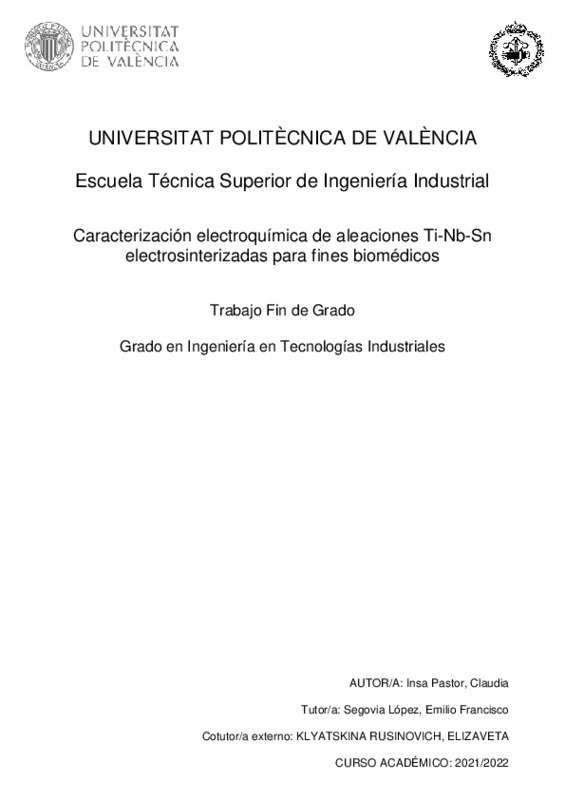JavaScript is disabled for your browser. Some features of this site may not work without it.
Buscar en RiuNet
Listar
Mi cuenta
Estadísticas
Ayuda RiuNet
Admin. UPV
Caracterización electroquímica de aleaciones Ti-Nb-Sn electrosinterizadas para fines biomédicos
Mostrar el registro completo del ítem
Insa Pastor, C. (2022). Caracterización electroquímica de aleaciones Ti-Nb-Sn electrosinterizadas para fines biomédicos. Universitat Politècnica de València. http://hdl.handle.net/10251/189614
Por favor, use este identificador para citar o enlazar este ítem: http://hdl.handle.net/10251/189614
Ficheros en el ítem
Metadatos del ítem
| Título: | Caracterización electroquímica de aleaciones Ti-Nb-Sn electrosinterizadas para fines biomédicos | |||
| Otro titulo: |
|
|||
| Autor: | Insa Pastor, Claudia | |||
| Director(es): | ||||
| Entidad UPV: |
|
|||
| Fecha acto/lectura: |
|
|||
| Resumen: |
[ES] Debido a sus propiedades mecánicas, químicas y a su biocompatibilidad el titanio se ha
convertido en un metal imprescindible en el campo de la medicina. A pesar de ello, su coste es
elevado hecho que ha hecho que ...[+]
[EN] Due to its mechanical and chemical properties and its biocompatibility, titanium has
become an essential metal in the field of medicine. Despite this, its cost is high, a fact that has
led us to alloy it with other ...[+]
|
|||
| Palabras clave: |
|
|||
| Derechos de uso: | Reserva de todos los derechos | |||
| Editorial: |
|
|||
| Titulación: |
|
|||
| Tipo: |
|
recommendations
Este ítem aparece en la(s) siguiente(s) colección(ones)
-
ETSII - Trabajos académicos [10484]
Escuela Técnica Superior de Ingenieros Industriales







